|
Consultation, brainstorming and research
Before changes are made to a place used by many people, there must first be a period of consultation, brainstorming and research.
When discussing possible changes, remember...
- there is no one way of transforming school grounds
- all users have different needs and experiences
- the schoolyard is essentially a space for children
- there are many environmental, educational, social, play, health-related, safety and community aspects to consider
Involving people
Involving everyone right from the start gives people an equal chance to join in the consultation and planning processes. Making sure everyone is involved will help you to achieve the best results for your school including the long-term use and maintenance of the grounds.
Key to success
No single set of individuals can devise a plan to suit every aspect of a school's needs, but everyone can work together to come up with a collective vision.
The key to success is to balance everyone's input. Try to address all concerns and ensure that everyone's dreams are reflected in some way to help foster school and community ownership of the final design.
Flexibility
It is important to build flexibility into the overall plan to allow people who will be involved in the future to further develop your ideas and add their own.
Your school grounds story begins when you first start thinking and talking about making improvements. It is the start of an evolutionary process that should be allowed to unfold naturally over many years as new life grows on the grounds and new people take over the project. Your job as the initial school grounds transformers is to build a solid foundation for the project to grow on.
There are many projects to choose from. The combination of choices made by each school will be largely determined by the site itself. An inner-city school may be restricted to building raised beds on asphalt or roof-top gardening, while a suburban or rural school may have several acres of land available for creating wildlife habitat and tree-shaded social spaces. No matter how limited the space available for greening, it is always possible to maximize its potential.
The more diverse the approach, the greater the potential for integrating all areas of the formal, as well as the "hidden" curriculum.
The "Hidden Curriculum"
Click to enlarge
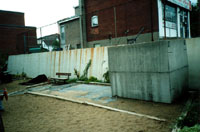 |
It is essential to pay attention to the "hidden curriculum" because it is one of the most important aspects of school grounds. The term is used to describe what people passively learn through their senses from messages they receive directly from their environments.
We continuously receive an enormous amount of information through our senses from our surroundings. We often have physical, emotional, rational and irrational, and conscious and subconscious reactions to, for example, colours, light, dark, sounds, noises, smells, speed, shapes, forms, heights, certain animals, and wide-open, enclosed, underground, crowded and empty spaces.
The hidden curriculum of school grounds is important because it has a powerful effect on children's behaviour and attitude. It affects their sense of safety, well-being, of being cared for and being respected and valued as well as their comfort, self esteem and interest in learning.
- The formal curriculum is deliberately taught to students.
- The informal curriculum is learned through participating in organized games and sports, and playing and socializing in specially-created spaces.
- The hidden curriculum is what is passively learned directly from the environment and the living and non-living things within it. In the context of the school grounds, the hidden curriculum refers to what children learn through their senses from the outdoor environments in which they spend a substantial portion of their school lives.
The question is: "What are they learning?"
Research shows that children use the lessons taught to them by their outdoor school environments to measure their own worth to the adults who design the spaces for them. Children read the lack of care and maintenance of the grounds as a reflection of their own lack of value to the school.
Often, the message conveyed and received is:
"Children, we don't care about you!"
Survey results show that the typical schoolyard teaches children that adults do
not care enough about them to create and maintain outdoor play and social spaces that are safe, caring, comfortable, healthy, colourful, interesting and enjoyable.
| JUSTIFICATION FOR DESIGN: |
MESSAGES RECEIVED BY CHILDREN: |
|
| Adults must be able to monitor the children at all times. |
We are irresponsible/untrustworthy. "We end up by behaving irresponsibly because that is what they expect us to do." |
Click to enlarge
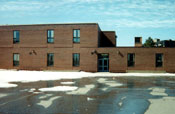 |
|
| The playground is for sports and active play. |
We should always run around to let off steam when outside. "There is nothing to do out there. It's boring. It's too noisy to think. We can't get away from the noise and running around." |
Click to enlarge
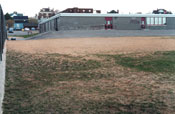 |
|
| Seating is unnecessary in the school yard because children want to engage in active forms of play. |
They don't care about us. The ground is good enough for us to sit on. "They would have seating and shade if they spent as much time out here as we do." |
Click to enlarge
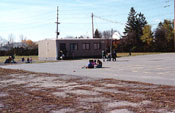
Click to enlarge
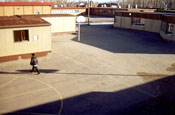 |
|
| Asphalt and grass are easy to maintain. |
We are not worth the time and effort required to design and maintain a more suitable environment. "Adults wouldn't like to spend time in the places they design for us." |
| Chain link fences are easy to maintain and easy to see through for after-hours surveillance from the street. |
They don't care about making us feel like we need to be locked up. "The fences are horrible. They make the yard look like a jail. They are dull and ugly and make you feel down." |
Click to enlarge
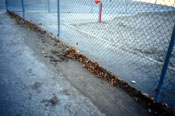 |
|
| Creating shelter from the wind, sun, rain, noise and boisterous play is not a design consideration. |
They don't care if we freeze in the Winter and burn in the Summer or have quiet places where we can get away from rough, noisy play. "We need places where we can get out of the cold wind and the blistering heat. We need quiet places and green habitat for children." |
Click to enlarge
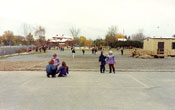 Click to enlarge
Click to enlarge
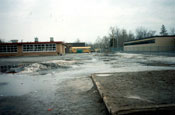 |
|
| Creating a space that is secure and easy to maintain is more important than comfort, aesthetics and enjoyment. |
Our comfort and enjoyment are not important. "We have nothing to look at but black paving, brick walls, metal fences, parking lots and roads. It's so ugly to look at every day and it's not comfortable. The colours are all dull and there is nothing to enjoy out there. The paving is plain and ugly and hurts us when we fall down." |
Click to enlarge
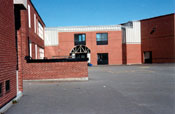
Click to enlarge
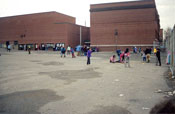 |
|
"First we make our environments and then they make us."
Sir
Winston Churchill
When we design environments for children, we are making environments that make the children. Spaces that are ugly, uncomfortable, unhealthy, uninteresting, uncaring and prison-like produce negative reactions among children. Spaces that recognize their needs generate positive responses.
A few decades ago, animals in zoos were displayed in cages and enclosures that ignored their need for natural habitat, interesting activities, places to forage, choice and privacy. Designing spaces without the animals' needs in mind resulted in aggressive behaviour, boredom, unhappiness, sickness and premature death.
Redesigning the spaces according to the animals' needs reduced aggression, boredom and unhappiness. The animals became emotionally and physically healthier and started to live longer. Some species were then found to breed more successfully in captivity.
Click to enlarge
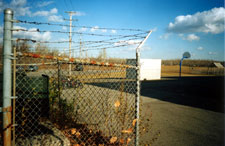 |
"Interestingly enough, both human and chimpanzee children are placed are placed in an environment which is not natural but which has been structured for them. However, the environment created for the chimpanzee in captivity was planned with more science, art and attention to their needs and potential."
Aaron and Winawer: Child's Play: A
Creative Approach to Playscapes for Today's Children,
1965 |
[ Back to top ] |